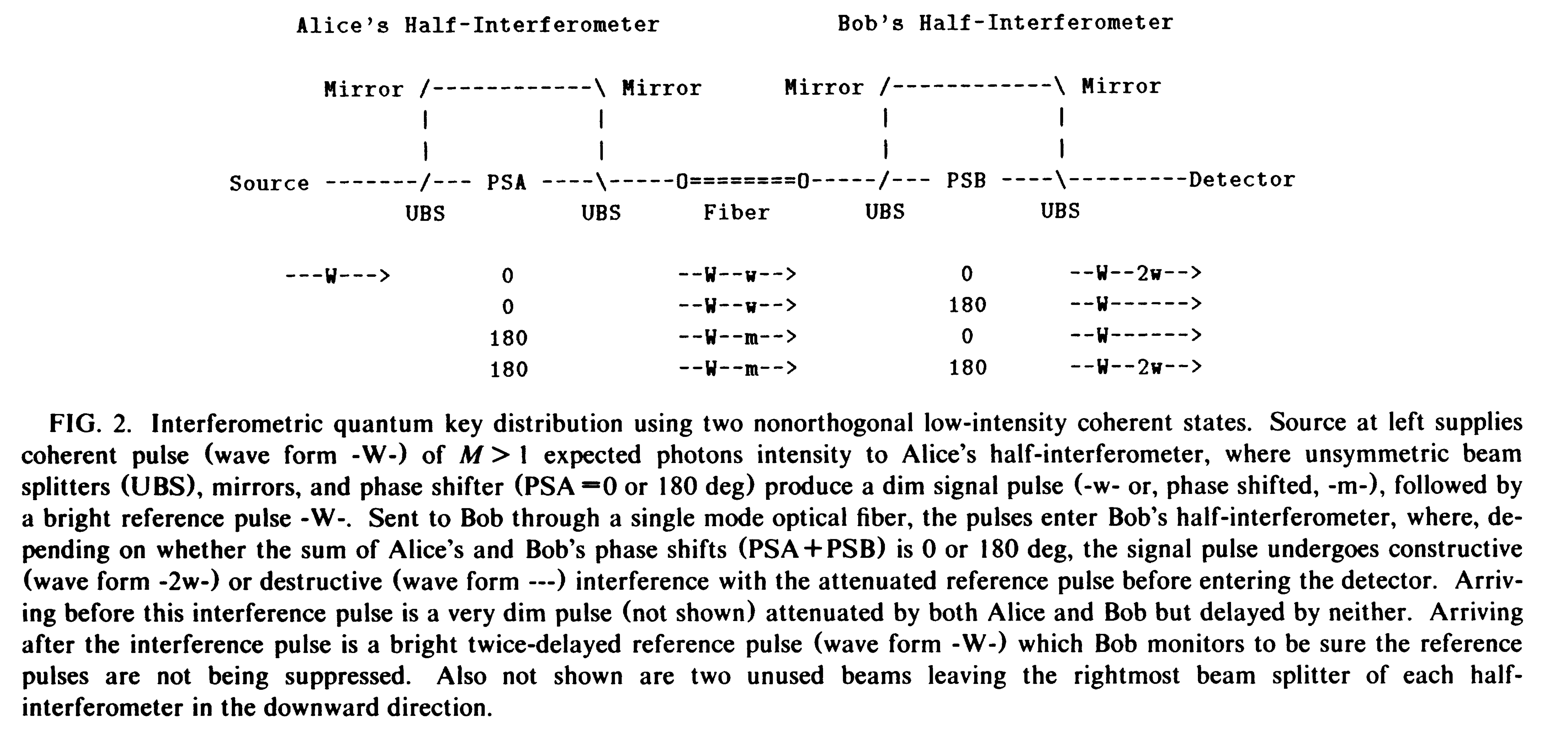1.7.2. Quantum Cryptography Using Any Two Nonorthogonal States[22]
Here we show that in principle any two nonorthogonal quantum states suffice, and describe a practical interferometric realization using low-intensity coherent light pulses.
Two of the main goals of cryptography: encrypting a subsequent meaningful message to make it unintelligible to a third party, and certifying to the legitimate receiver that a message (plain or encrypted) has not been altered in transit.
The security of non-EPR key distribution schemes is derived from the fact that any measurement which fails to disturb each of two nonorthogonal states also fails to yield any information distinguishing them.
Let and be two distinct, nonorthogonal states, and let and be (noncommuting) projection operators onto subspaces orthogonal to and , respectively (note reversed order of indices). Thus annihilates , but yields a positive result with probability when applied to , and vice versa for
To begin the key distribution, Alice prepares and sends Bob a random binary sequence of quantum systems, using states and to represent the bits 0 and 1, respectively. Bob then decides, randomly and independently of Alice for each system, whether to subject it to a measurement of or . Next Bob publicly tells Alice in which instances his measurement had a positive result (but not,of course, which measurement he made), and the two parties agree to discard all the other instances.
If there has been no eavesdropping, the remaining instances, a fraction approximately of the original trials, should be perfectly correlated, consisting entirely of instances in which Alice sent and Bob measured , or Alice sent and Bob measured . However, before Alice and Bob can trust this data as key, they must, as in other key distribution schemes, sacrifice some of it to verify that their versions of the key are indeed identical. This also certifies the absence of eavesdropping, which would necessarily have disturbed the states or in transit, causing them sometimes to yield positive results when later subjected to measurements or , respectively.

This third pulse contains no phase information, but serves to confirm that the reference pulse has actually arrived. It thus protects against an attack in which an eavesdropper (“Eve”) would measure each signal- reference pulse pair by an apparatus similar to Bob's, resend a correctly fabricated pulse pair whenever she was successful, and suppress both the signal and reference pulses when she was unsuccessful, thereby eavesdropping on the channel without creating errors in Bob's subsequent measurement results. Eve cannot suppress the reference pulse without immediately being caught. But if she suppresses only the signal pulse, the uncancelled reference pulse will still produce a count in Bob's detector with probability ,, and half these counts will result in errors in Bob's key.
Since any pair of coherent or incoherent optical signals become significantly nonorthogonal at low intensity, it would seem that almost any source of two kinds of dim light flash could be used for key distribution without the complications of interferometry. However, a more intrusive Eve, who stands between Alice and Bob, can thoroughly subvert the scheme by intercepting all AIice’s flashes, and resending a flash to Bob only when she succeeds in seeing Alice’s flash herself, while simply stopping the others. By contrast, in the interferometric scheme of Fig. 2, there is no fake signal an eavesdropper can substitute to hide her failure to detect the original signal, and the scheme remains secure.